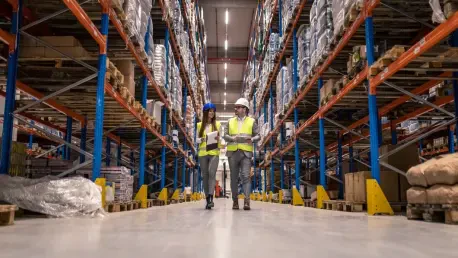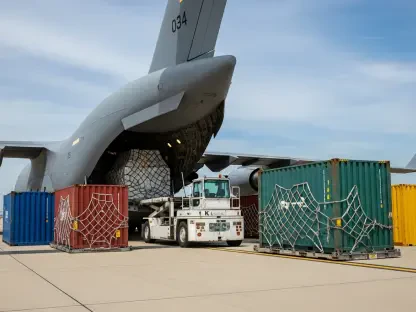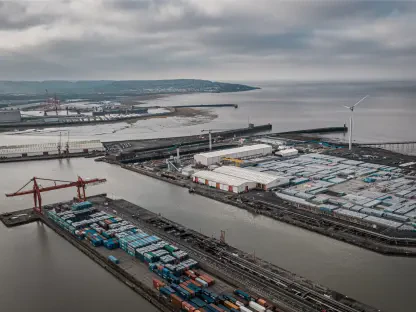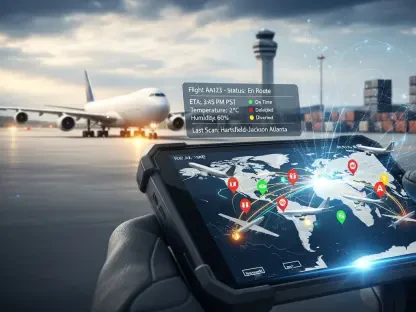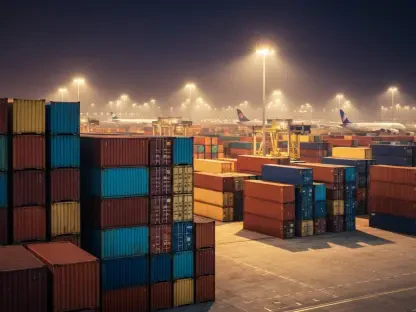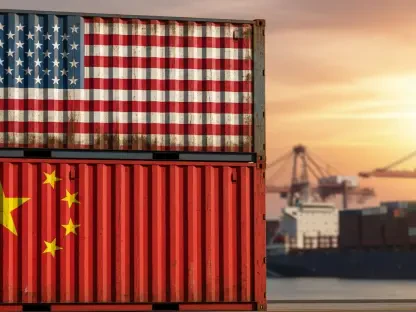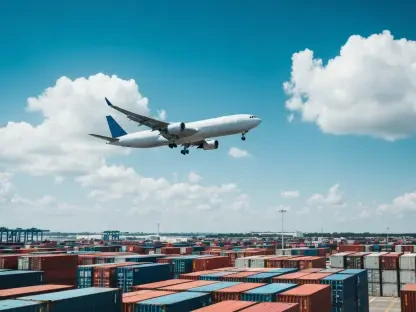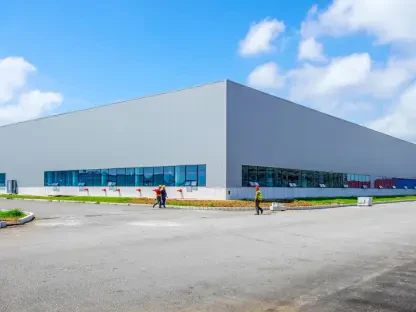The Evolving Landscape of Logistics M&A
The logistics industry stands at a transformative crossroads in 2025, with mergers and acquisitions (M&A) activity surging to unprecedented levels, especially in the warehousing sector, as companies scramble to meet the demands of a globalized supply chain. This wave of consolidation reflects a strategic push to capture market share amid rising e-commerce needs and supply chain complexities. What was once an industry dominated by family-run operations is now a battleground for large-scale players seeking to optimize networks through acquisitions.
This shift away from traditional models highlights a pivotal driver behind modern deals: technology. No longer just a tool for efficiency, technological integration has become a cornerstone of strategic acquisitions, enabling firms to streamline operations and enhance scalability. Major players in logistics, spanning freight forwarding, last-mile delivery, and warehousing, increasingly prioritize tech capabilities when evaluating potential targets.
Market segments like third-party logistics and cold chain storage are particularly active, with technology acting as a differentiator in deal attractiveness. The ability to integrate advanced systems into existing operations often determines whether a merger succeeds or falters. As such, the role of digital infrastructure in shaping the logistics M&A landscape cannot be overstated, setting the stage for a deeper exploration of its impact.
The Role of Technology in M&A Success
Key Systems Driving Operational Readiness
Technology forms the backbone of operational readiness in logistics M&A, with systems like Warehouse Management Systems (WMS) and Transportation Management Systems (TMS) playing critical roles. These platforms provide unparalleled transparency into inventory levels, shipment tracking, and resource allocation, enabling companies to present a clear picture of their operational health during due diligence. Such visibility is vital for building trust with potential investors.
Beyond transparency, real-time data and predictive analytics offered by these systems empower stakeholders to make informed decisions. Historical performance metrics allow buyers to assess long-term viability, while predictive tools forecast potential bottlenecks or growth opportunities. This data-driven approach not only boosts investor confidence but also highlights a target company’s readiness for integration into larger networks.
Technology as a Strategic Asset
Modern, cloud-based systems stand out as strategic assets during the post-acquisition phase, smoothing the often turbulent transition process. These platforms enable seamless data sharing across merged entities, reducing the friction of combining disparate operations. The result is a significant cut in integration costs and minimized downtime, which can otherwise derail a deal’s momentum.
The impact on operational continuity is equally profound, as advanced systems ensure that day-to-day activities remain unaffected during ownership changes. Faster onboarding of new teams and efficient consolidation of data further enhance the value of technology in these scenarios. Companies equipped with such tools are better positioned to maintain service levels, preserving customer trust throughout the M&A journey.
Challenges of Tech Adoption in Logistics M&A
The path to technological integration in logistics M&A is not without obstacles, particularly for companies still reliant on outdated or paper-based systems. Such legacy approaches create significant hurdles during due diligence, as they obscure critical operational data and complicate valuation efforts. Buyers often view these inefficiencies as red flags, potentially derailing negotiations or lowering offer prices.
Workforce resistance adds another layer of complexity, as employees accustomed to manual processes may struggle to adapt to digital tools. High training costs and temporary dips in productivity can strain budgets and timelines, especially in the immediate aftermath of a merger. These cultural and financial barriers underscore the challenges of aligning human capital with technological advancements in a high-stakes environment.
Overcoming these issues requires a measured approach, such as incremental tech adoption tailored to a company’s specific needs. Change management strategies, including clear communication and phased training programs, can ease the transition for staff. By prioritizing adaptability over rapid overhauls, firms can mitigate risks and demonstrate a commitment to modernization that appeals to prospective buyers.
Tech Fluency and Organizational Preparedness
A company’s technological maturity serves as a powerful signal of its readiness for M&A, often influencing how potential buyers and investors perceive its value. Firms with robust digital infrastructure are seen as lower-risk targets, capable of integrating smoothly into larger ecosystems. This perception can directly impact deal terms and expedite the acquisition process.
Cultural adaptability plays an equally important role in this equation, as organizations must foster an environment where employees embrace digital tools. Comprehensive training initiatives and leadership support are essential to bridge skill gaps and build confidence in new systems. A workforce aligned with technological goals enhances a company’s appeal during M&A evaluations.
Ultimately, tech fluency contributes to long-term enterprise value by positioning a company as a forward-thinking player in a competitive market. Buyers are more likely to invest in businesses that demonstrate a clear path to scalability through technology. This strategic advantage not only drives deal success but also strengthens market positioning for years to come.
Future Trends in Logistics M&A and Technology
Looking ahead, emerging digital trends such as automation and advanced analytics are set to redefine the logistics industry’s M&A landscape. Robotic process automation in warehouses and AI-driven demand forecasting are already enhancing operational precision, making tech-savvy companies more attractive acquisition targets. These innovations promise to reshape competitive dynamics over the next few years.
Technology’s influence on deal valuation is expected to grow, with buyers placing higher premiums on firms that leverage cutting-edge tools. From 2025 to 2027, the industry anticipates a wave of investments in scalable systems as companies race to stay ahead of market disruptors. The ability to adopt and integrate these advancements will likely become a key metric in assessing M&A attractiveness.
Global economic factors, including trade policies and supply chain resilience, will further drive tech investments in logistics. As firms navigate uncertainties, those prioritizing innovation are poised to lead in deal activity. The intersection of technology and strategic acquisitions will continue to shape the sector, rewarding companies that anticipate and adapt to these evolving trends.
Conclusion: Embracing Tech Fluency for M&A Success
Reflecting on the insights gathered, it becomes evident that tech fluency stands as a linchpin for successful logistics M&A deals throughout the discussions. Companies that have invested in scalable systems like modern WMS and TMS find themselves better equipped to handle the rigors of due diligence and integration, often securing favorable terms as a result.
Moving forward, logistics operators are encouraged to take proactive steps, such as auditing their current tech stack and identifying gaps that could hinder future deals. Investing in integrable platforms and prioritizing data preparedness emerge as practical measures to streamline the M&A process. These actions not only enhance operational efficiency but also elevate a firm’s appeal to discerning buyers.
Beyond immediate tactics, a broader focus on fostering a tech-ready culture proves essential for sustained success. By committing to employee training and incremental digital upgrades, businesses position themselves to navigate future market shifts with agility. This strategic emphasis on technology as a core asset ultimately paves the way for enduring growth and competitiveness in an ever-changing industry.
